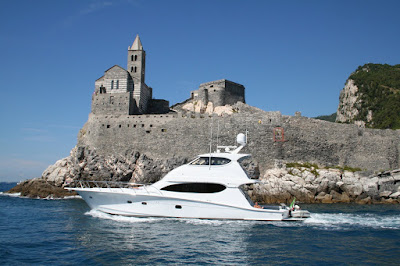 As if I hadn't had enough, I was back in the "friendly skies" enroute to Washington, D.C. within three weeks of returning from Italy for the annual Public Relations Society of America (PRSA) International Conference held at the Washington Hilton (above) October 15-19.
As if I hadn't had enough, I was back in the "friendly skies" enroute to Washington, D.C. within three weeks of returning from Italy for the annual Public Relations Society of America (PRSA) International Conference held at the Washington Hilton (above) October 15-19.
PRSA, the world's foremost organization of public relations and communications professionals, has more than 31,000 members ranging from every practice area within the PR field, representing business and industry, agencies and counseling firms, government, associations, hospitals, schools, non-profit organizations and more.
 Assembly is an interesting experience; it's the governing body of PRSA, with nearly 300 delegates representing 110 chapters in 10 districts, as well as 16 special interest sections. Assembly is always a lively affair, lots of people with lots of opinions, much like the nominating convention scene in The Man Who Shot Liberty Valance.
Assembly is an interesting experience; it's the governing body of PRSA, with nearly 300 delegates representing 110 chapters in 10 districts, as well as 16 special interest sections. Assembly is always a lively affair, lots of people with lots of opinions, much like the nominating convention scene in The Man Who Shot Liberty Valance.
 After months of spirited debate on a PRSA e-group, followed by more passionate perspective at the Assembly, the amendment to remove the APR as a prerequisite for national board service was soundly defeated. Otherwise, my time was spent in meetings and sessions, though I had several opportunities to connect with the contingent of UO PRSSA student members in D.C. for the international conference.
After months of spirited debate on a PRSA e-group, followed by more passionate perspective at the Assembly, the amendment to remove the APR as a prerequisite for national board service was soundly defeated. Otherwise, my time was spent in meetings and sessions, though I had several opportunities to connect with the contingent of UO PRSSA student members in D.C. for the international conference.
Per usual, my role was to wear many hats: PRSA Assembly delegate representing both the Greater Oregon Chapter PRSA and North Pacific District PRSA (as an alternate for district chair Nancy Kincaid, who was unable to attend), and as professional advisor for the University of Oregon Chapter of the Public Relations Student Society of America. The PRSSA holds its annual conference in conjunction with PRSA.
 Assembly is an interesting experience; it's the governing body of PRSA, with nearly 300 delegates representing 110 chapters in 10 districts, as well as 16 special interest sections. Assembly is always a lively affair, lots of people with lots of opinions, much like the nominating convention scene in The Man Who Shot Liberty Valance.
Assembly is an interesting experience; it's the governing body of PRSA, with nearly 300 delegates representing 110 chapters in 10 districts, as well as 16 special interest sections. Assembly is always a lively affair, lots of people with lots of opinions, much like the nominating convention scene in The Man Who Shot Liberty Valance.
This year's point of contention was an amendment that would open up national board service to non-accredited members. The "Accreditation in Public Relations" (APR) is a credential -- achieved through a rigorous testing and interview process -- that acknowledges that a PR practitioner has the requisite knowledge for principled PR expertise and proficiency. This is important in a profession where licensure is not required and many people practice PR without knowing key competencies and appropriate ethical guidelines for decision-making.
 After months of spirited debate on a PRSA e-group, followed by more passionate perspective at the Assembly, the amendment to remove the APR as a prerequisite for national board service was soundly defeated. Otherwise, my time was spent in meetings and sessions, though I had several opportunities to connect with the contingent of UO PRSSA student members in D.C. for the international conference.
After months of spirited debate on a PRSA e-group, followed by more passionate perspective at the Assembly, the amendment to remove the APR as a prerequisite for national board service was soundly defeated. Otherwise, my time was spent in meetings and sessions, though I had several opportunities to connect with the contingent of UO PRSSA student members in D.C. for the international conference.
With what little time I had left, I explored the Capitol Mall, including the White House (below), the Washington Monument, the Reflecting Pool and other points of interest in "our nation's capitol," as Forrest Gump might say. Despite my brief stay, I became quite proficient at using the "Metro," the subway system in Washington, D.C.
At the White House, I encountered a large contingent of police officers and secret service agents, none of whom looked too friendly. Ironically, President Obama was campaigning in Oregon.
He must have known I was gonna be in the neighborhood.



















































